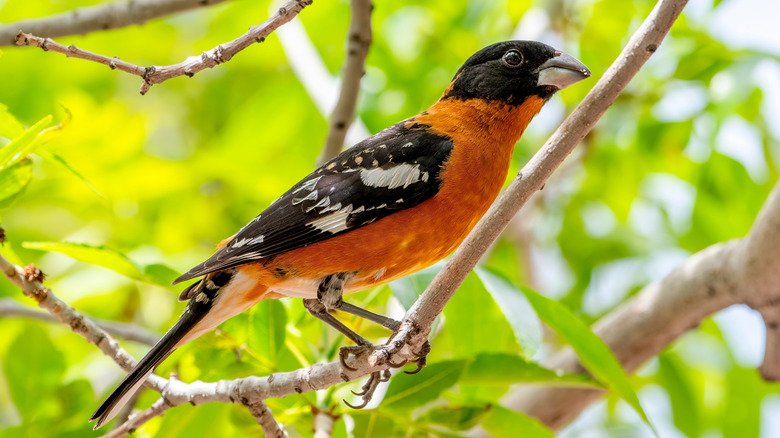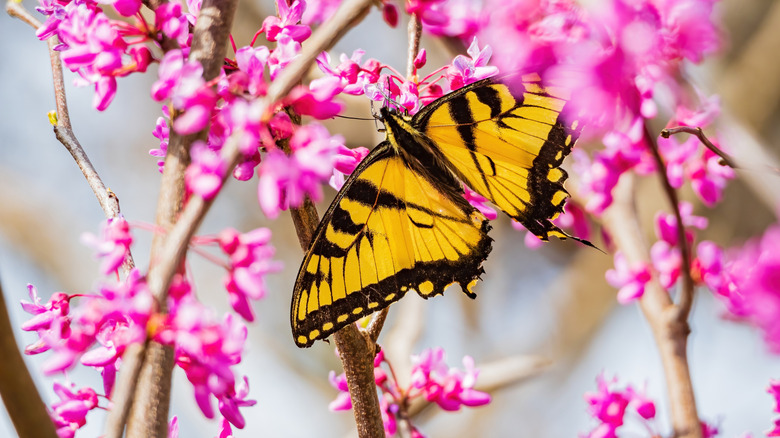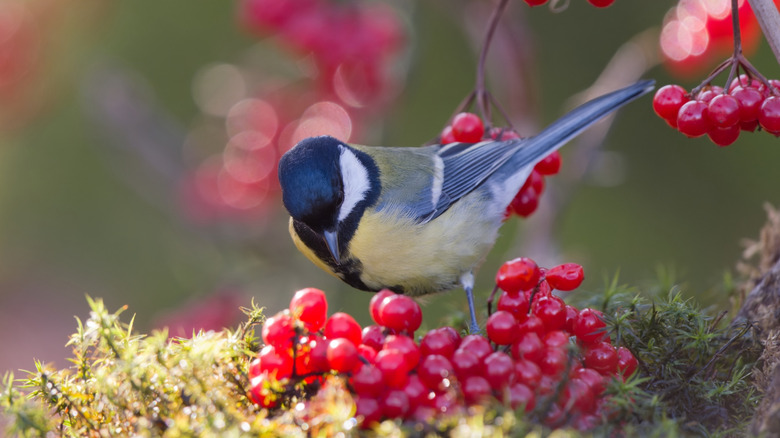These Fruit Trees Will Turn Your Yard Into A Bird And Butterfly Wonderland
Whether you want to scope out birds with binoculars from your kitchen window or hope to bring in bees and butterflies to help pollinate your vegetable garden, growing a diverse selection of trees will bring more biodiversity to your backyard. While fruit trees such as crabapples (Malus spp.), plums (Prunus spp.), and cherries provide excellent wildlife resources, there are many other types of fruiting trees that are valuable to birds and pollinators as well, including viburnums (Viburnum spp.), hawthorns (Crataegus spp.), and hollies (Ilex spp.).
In fact, some fruit trees are more powerful wildlife allies than others. So, if you want to attract a diverse variety of birds to your yard, grow a well-curated selection of fruit trees native to your region and you will bolster your local communities of birds, butterflies, and bees for years to come. And know that while fruit is an important feature of these plants, it isn't the only thing that attracts birds and other wildlife to these trees.
Why birds and butterflies love fruit trees
The fruiting trees in our yards can supply birds with an important source of food for the entire year when chosen intentionally. And since they bear flowers before they grow fruit, these types of trees produce a staggering amount of nectar for pollinators compared to smaller plants like perennials and annuals. Bees and other pollinators like butterflies depend on these types of trees as dense offerings of nectar provided at crucial moments, such as during reproduction.
The best types of trees that help butterflies and pollinators, along with birds, also provide shelter. These stately plants offer spots for our feathered friends to sit out storms, either huddled next to tree trunks or in cavities, as well as locations to build their nests. Fruit trees provide places for birds to perch, while also providing rich sources of larval insects, particularly caterpillars — which, from a bird's point of view, is the perfect baby food.
The best fruit trees to plant to attract birds and pollinators
If you're torn between growing these foods for yourself or dedicating them for wildlife use, don't worry, most of the fruit and berry trees that birds love bear crops that tend to be either unpalatable or toxic to humans. For instance, black cherry (Prunus serotina) provides a source of wildlife forage during the summer, and their cherries aren't nearly as tasty to humans as they are to birds. The same goes for the tart and slightly bitter wild plum (Prunus americana). Other good wildlife tree options include serviceberries for robins and grosbeaks, or hawthorns and dogwood trees for cedar waxwings. And crabapples, large flowering trees related to apple trees, provide late winter forage for all sorts of birds.
Pollinators use a wide variety of native, fruit-producing trees as well. Tiger swallowtail butterflies lay their eggs on tulip trees (Liriodendron tulipifera) and black cherries. Chokecherry (Prunus virginiana) foliage also makes a great food source for caterpillars before they transform into butterflies. Likewise, local bee populations depend on native fruit-producing trees such as hawthorns and crabapples. Meanwhile, viburnums and hollies do double duty in feeding both larval butterflies with their foliage and birds with their berries. Whichever types you choose, pick selections with staggered flowering and fruiting times to keep your wildlife wonderland open throughout the seasons, and grow plants native to your region to reap the greatest benefits.


